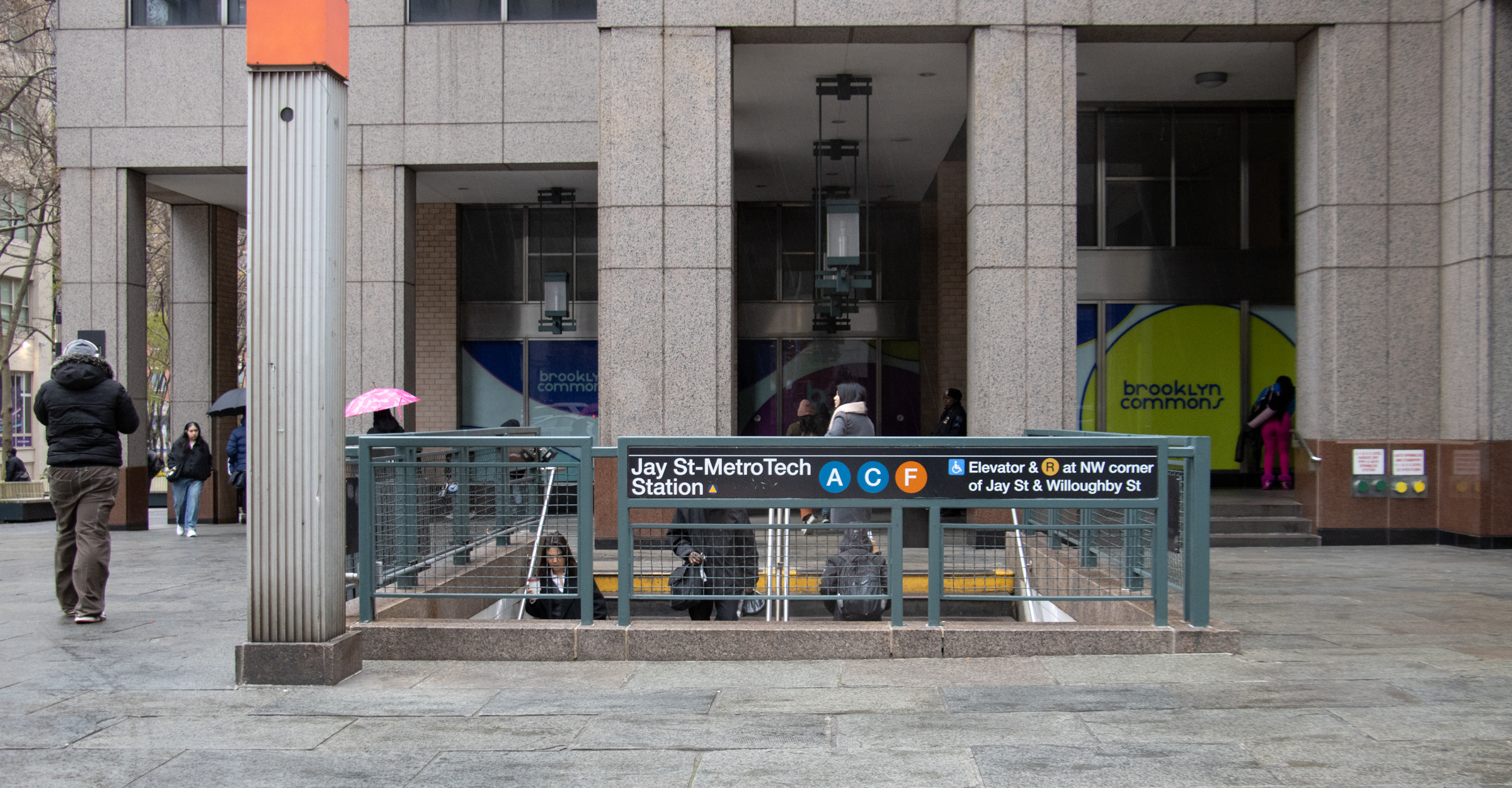Corcoran Market Report: We're OK, Actually
We got our hands on Corcoran’s Q2 sales data, and it shows that the state of the Brooklyn market isn’t quite as precarious as the Times made it out to be. The median price per square foot sales price of condos and co-ops is up 10 percent over this time last year, to $560,000, and…


We got our hands on Corcoran’s Q2 sales data, and it shows that the state of the Brooklyn market isn’t quite as precarious as the Times made it out to be. The median price per square foot sales price of condos and co-ops is up 10 percent over this time last year, to $560,000, and there was a 4 percent reduction in condo/co-op inventory. In terms of townhouses, while the median price on one-families was down 3 percent from Q2 ’07 levels, to $965,000, the median price on 2-4 families was up 6 percent, to $1,240,000. In fact, all the brownstone Brooklyn neighborhoods had pretty substantial price increases in the larger townhouse category, and inventory was extremely tight. The most startling figure in the report is the 15 percent decrease in median prices for Williamsburg condos, but even that doesn’t seem so horrible when you factor in that Corcoran had 47 percent more condo listings between April and June ’08 compared to the same three months in ’07. Another mediating factor to consider in viewing the drop in median price of Williamsburg condos: Many developers began skewing their mix of inventory towards studios and one-bedrooms since those were the units that were selling best; if there were more small apartments in the 2008 data, one would expect to see average and median prices declining. Conclusion: We don’t think the party’s over and done with in Brooklyn, either.
Manhattan ‘Still a Party’; Hangover for Williamsburg? [Brownstoner]





citi has 350,000 employees worldwide. 7900 is not 26%. They announced a 10% reduction on the Banking and Capital markets staff (abtou 6500 to be laid off) in addition to their earlier lay offs. Only a portion of those laid off will be in NYC.
The new condos are exactly like (well, poorer quality and more expensive, but equally bland) new condos being built in the center of every city in the US. Nothing distinctive and very little limited, there.
How likely is it that brownstone prices can separate from condo prices in similar neighborhoods? All you need is a few people who will switch at the right price to bring them back in balance.
Even brownstone supply should be responsive to prices. At current prices, lots of landlords must be thinking about ways to convert their rentals into owner-occupied. Why work for your money when you can have twice as much just by cashing out?
INVENTORY is down, presumably because sellers have decided to wait out the softness. SUPPLY is wildly up and continuing to rise.
Effective demand — that is, not the “infinite” desire polemicist sees, but real market demand backed by ability to pay — drops with each price increase, each layoff, each bank retrenchment, each European who decides that NYC (or the dollar) is too risky for whatever they have left after their own bubble poppings, each new chain store that Disneyfies NYC into a crowded clone of a hundred cheaper cities with walkable downtowns and cool pubs.
Our prices are up in the very steep part of the wealth/income distribution. There aren’t a lot of people who can afford PS houses today at current selling prices. At current asking prices, there are at least 1/3 fewer.
Eventually Adam Smith will prevail over faith-based economics.
11:51
I too lament the conversion of our economy into the FIRE racket, despite my employment in real estate related economics matters.
My point is simply this: Even if Wall Street collapsed tomorrow, people in other occupations would be more than willing to buy these condos at the right price.
It only makes sense in a free market economy that producers of goods will attempt to market them for the highest possible price. It is more complicated with real estate because of financing, but even in the early 1990s – banks foreclosed on condo projects and sold the units at a loss.
In short, Wall Street is not the end all be all of real estate in this city. New York City will be great regardless of what happens there. That means there will still be jobs, and people will still need housing. Prices might decline, developers and buyers might foreclose, but it’s not like these new condos will have zero value or worse.
If you were really old, which you clearly aren’t, you’d know this phenomenon is what allowed blacks to move to the city in droves. Harlem was built as luxury housing, but there were no white buyers. So, blacks got great housing at a cheap price. The cultural heart of black America exists because of the very phenomenon you don’t seem to understand. Brownstones in Bed-Stuy still sell for way below the reproduction cost today.
These kinds of cycles are what have created the diverse city you know today.
All of you suggesting other cities need to keep in mind that other cities are faring MUCH WORSE than NYC.
Move to Baltimore if you want. Good luck finding a job that pays more than 8 bucks an hour.
And try not to get shot in your “beautiful” brownstone surrounded by one of the most crime ridden cities in the United States.
Denver? Sure…lovely town. Jobs are scarce and housing prices are tanking.
All of these arguments are so silly.
Just stay put, stop thinking about all of this so much and enjoy your life.
In 5-10 years, this will all be a distant memory.
Fox reports “Henhouse is secure.”
“Who will be able to afford the $1000 per square foot brownstones which cost a fortune to maintain once the job cuts on Wall Street hit?”
I live in a North Slope block and know most of my neighbors. Exactly ONE of them work on Wall Street.
The myth that Wall Streeters own all of Brooklyn’s Brownstones is asinine.
Even Denver has neighborhoods with a “brownstone” feel.
studios and 1 BR’s usually sell at more per sF than larger apartments and would send the average higher.
Keep in mind the real recession has not hit NYC yet. First comes the credit crisis, then the real crisis, the one we actually feel.
NYC’s primary employer is finance industry. And this industry famously lays people off with benefits. All those people layed off in January were receiving company benefits for 6 months or more. Now, these benefits are starting to disappear and these people will now not be able to afford 3,000 one bedrooms as they collect unemployment benefits and look for work. As more people are getting layed off now, these effects will also come later.
Estimates: Bear Stearns is losing 7,500 people (or 53% of their workforce), Wachovia is firing 1,200 (30%). Citigroup is firing 7,900 (26%) ABN/RBS is firing 7,000 or 25%. UBS is firing 4,380 or 19% of its workforce. Bof America is firing 3,650 or 18.2% of its workforce. Lehman Brothers is having trouble staying afloat and is losing 5,000 people or 16% of its people. Morgan Stanley is losing 5,400 people or 11.4%. Granted, not all of these jobs are in NYC. But you get the picture no?
These effects take a while to hit the real world. For the most part rich people don’t really feel affected by this, because of all the cash they sit on, it doesn’t matter if their brownstone is 4 million or 5 million. But the effects should start hittin gthe market as soon as we have less finance people clamoring for 1 bedroom apartments.
The first true sign of the real crisis is Starbucks cutting jobs and shutting stores. Who is going to pay 5 dollars for burnt coffee now?